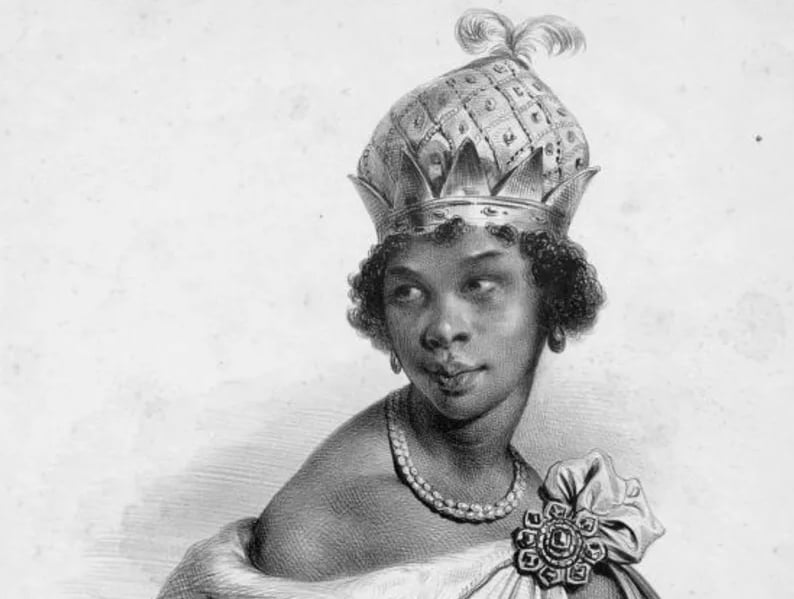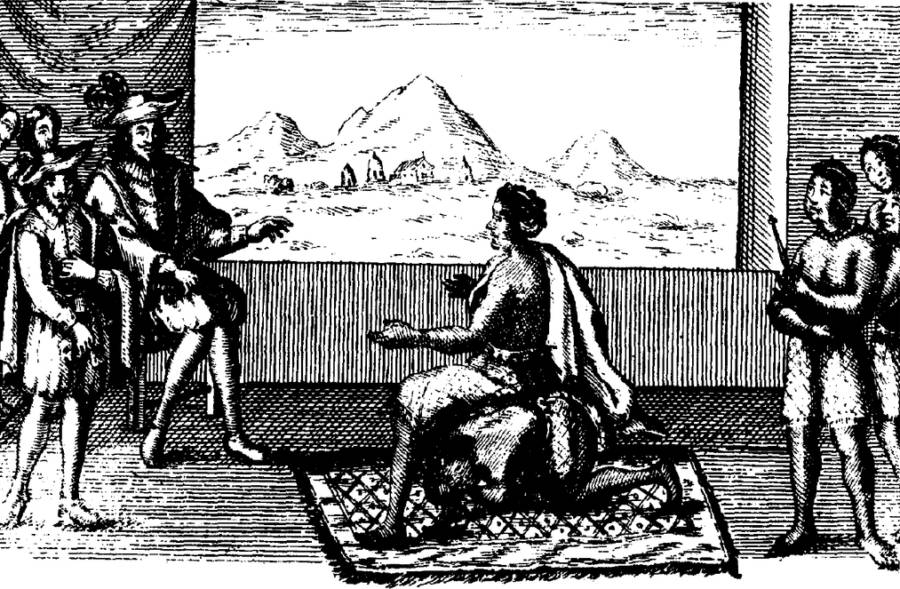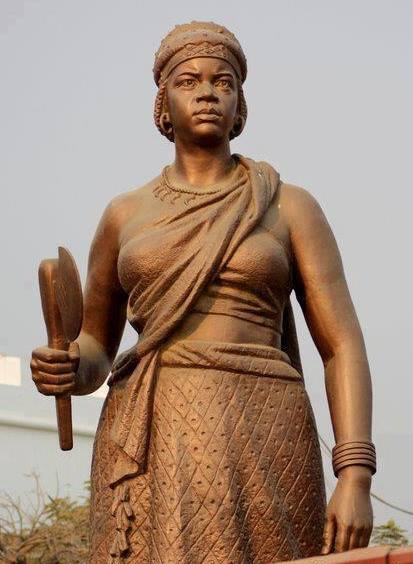Between 1624 and her death in 1663, Queen Ana Nzinga ruled over the Ndongo and Matamba kingdoms while fending off European colonial forces.

Wikimedia CommonsThe fearless ruler of the Ndongo and Matamba people of present-day Angola, Queen Nzinga fended off Portuguese slavers throughout the 17th century.
Sometime around 1583, a little girl named Nzinga Mbande was born in what’s now Angola. Hers was not an easy entry into the world, and legend has it she was born with her umbilical cord around her neck. Many villagers believed that individuals born in this manner would grow up to be proud, powerful people. Legends say that a village wise woman told Nzinga’s mother that her daughter would grow up to be queen.
It wasn’t exactly a shot-in-the-dark prophecy, though. Nzinga’s father, Ngola Kilombo Kia Kasenda, was the King of Ndongo, one half of Angola’s divided nation. Her mother, Kengela ka Nkombe, was one of King Kilombo’s many slave wives, his favorite concubine.
As a child, Nzinga (also known as Njinga) was privy to how her father ruled. Of his children, he clearly favored Nzinga — but since she was a girl, none of the king’s potential heirs, namely his son Mbandi, viewed her as a threat to their claim to the throne.
Nzinga was also given military training, taught to use the traditional weapon of the Ndongan warriors: the battle axe. And as she grew older, King Kilombo allowed Nzinga to have a seat alongside him in many official capacities, including ritualistic matters, legal councils, and councils of war.
As a result, Nzinga became heavily invested in the struggle the people of Ndongo faced with their enemies, the Kongo.
The Portuguese Empire Betrays Ndongo — And Queen Nzinga Takes A Bold Stand
All of this transpired at a time when Portuguese missionaries had identified Angola as a prime target for the slave trade.
In fact, these missionaries were so prominent in Ndongo that Nzinga herself learned to read and write the Portuguese language from them.

UNESCO/Wikimedia CommonsA UNESCO illustration of Nzinga, Queen of Ndongo.
Even King Kilombo, at first, worked with the Portuguese to arrange a slave trade — on the condition that they spare his people.
Upon the king’s death, however, the Portuguese saw no reason to continue to honor the arrangement. They proceeded to throw Mbandi in prison, and took control of his kingdom.
Nzinga, however, was not content to sit idly by and let the Portuguese remain in power. An outstanding negotiator, she was ready to win her kingdom back through diplomacy, though she was hardly given a fair chance.
As the story goes, she marched straight to the Portuguese governor’s office with the intention of demanding not only the safe return of her brother — but the release of all Angola’s people from slavery as well.
The governor refused to offer Nzinga a chair. So, Nzinga — who had upwards of 50 male servants in her service at any given time — told a servant to get down on the ground and create a perch upon which she could sit. Upon settling onto the servant’s back, Nzinga proceeded to launch into her negotiations.

Wikimedia CommonsNzinga negotiating the release of her brother from the Portuguese.
When the discussion ended, Nzinga told the servant to stand, at which point she slit his throat in front of the Portuguese governor. Realizing, perhaps, that they were dealing with someone far more powerful than they realized, the Portuguese government acquiesced and returned her brother.
Shortly after, her brother and her nephew both died — and it’s possible that Nzinga had them both killed so she could ascend to the throne.
Other historical accounts posit that her brother committed suicide upon realizing the state of the country and his inability to fix the turmoil.
In any case, in 1624 she became Queen Nzinga of Ndongo — though not without a fight. Queen Nzinga had plenty of political rivals who balked at the idea of a female monarch and sought to run her out of town.
She was forced to leave the country, during which time her sister became a puppet ruler for the Portuguese.
Little did the Portuguese know that she was also acting as Queen Nzinga’s spy, keeping her abreast of all the happenings in Ndongo after she fled.
Queen Nzinga Establishes The State Of Matamba And Strikes Back Against The Portuguese
According to The Met, after being forced to flee Ndongo, Nzinga established a new state known as Matamba, further west and out of the reaches of the Portuguese Empire.
Here, she offered sanctuary to slaves and African soldiers who had been trained by the Portuguese. She established a military organization known as kilombo, where children would renounce ties to their families, to be raised instead in small, communal militias.
And with the help of her rather impressive harem of Dutch soldiers, Queen Nzinga attempted to cut off slave trade routes, often by force. Realizing, too, that Matamba’s location made it well suited for trade, Queen Nzinga also cultivated the kingdom’s commerce.

Wikimedia CommonsA statue of Nzinga in Luanda, Angola.
By 1656, the Portuguese finally threw in the towel. For the last decade or so of Queen Nzinga’s life, her people avoided European colonialism — a success that outlived the queen herself, in fact. She died in 1663 and is remembered as a fierce and persistent leader who changed the course of history to this day.
While it wouldn’t be until 1975 that the entirety of Angola achieved independence, its continued fight was rooted in Queen Nzinga’s historic legacy.
For more bad-ass women in history like Queen Nzinga Mbande, check out our profiles of Wu Zetian and Jeannette Rankin. Finally, read up on Mansa Musa, the African leader who may have been the richest person of all time.





